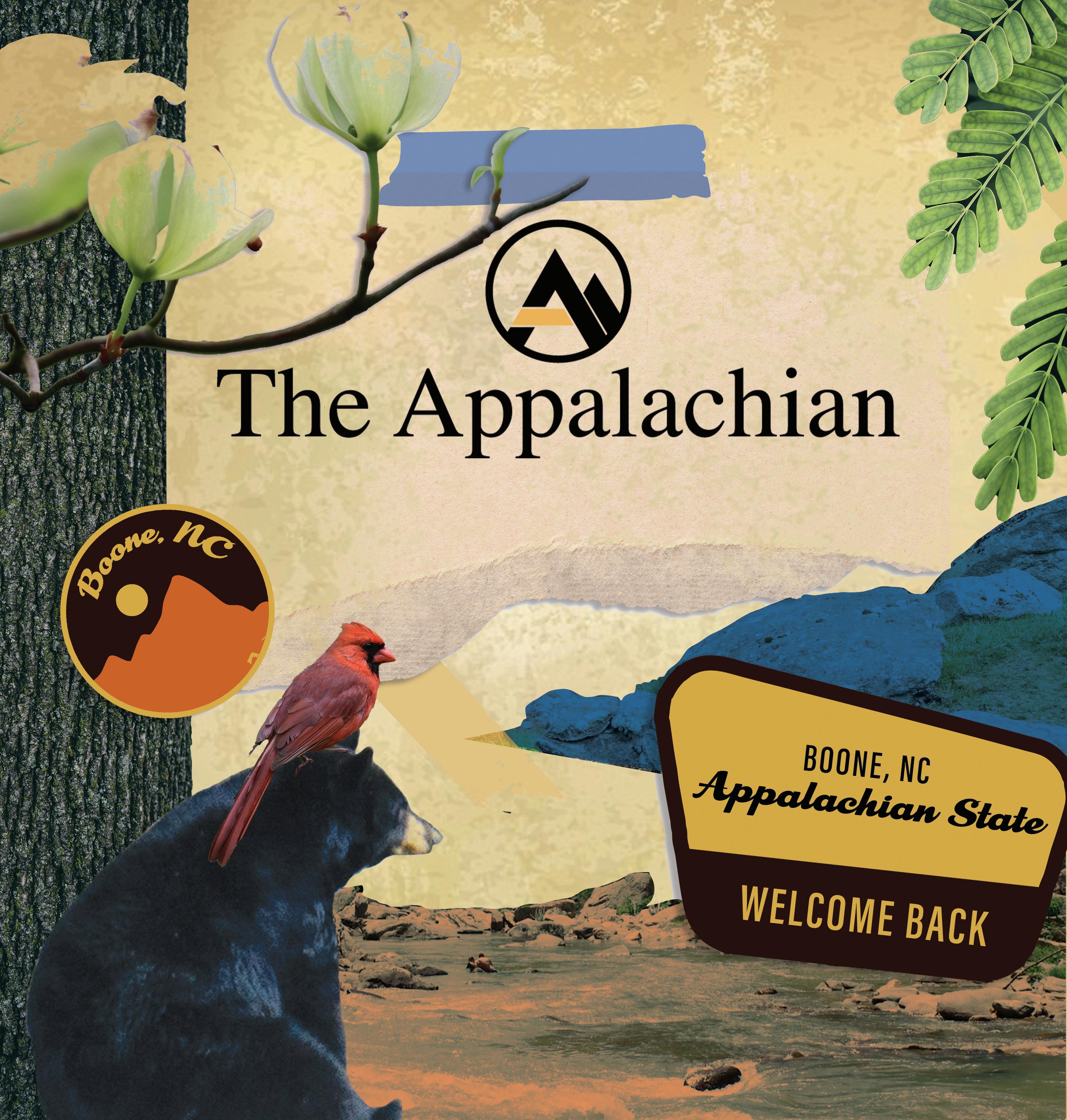










Meg Frantz | Editor-in-Chief
So much around you is new right now. New classes, new academic buildings, new faces and new people to meet. The Appalachian studentrun newspaper is also somewhat new this year, with a fresh Editorial Board and me, your new editor-in-chief.
Whether you are brand new and have no idea who we are or an ardent reader of The Appalachian, our role is to serve as a place for public discourse that is important to you, and tell you the truth about what is going on around you accurately and fairly.
Our staff strives to be ethical and empathetic in reporting, always. From covering the impact of Hurricane Helene and changes in Mountaineer football coaching staff to marking Appalachian Dance Ensemble’s anniversary and writing federal-level political op-eds, our promise is to tell your story with your words and your experience — not bring ours into the mix.
In our commitment to you, we are shifting to online coverage this year for our special sections — Hispanic Heritage Month, Black History
Month and more — to prioritize long-term coverage over a one-month highlight.
Thank you, reader, for choosing to pick up our first edition of the academic year. Be on the lookout for more from us daily online, monthly on almost 65 stands and weekly in your inbox.
I am honored to have the opportunity to lead this organization as the editor-in-chief for the 2025-26 term, and I can’t wait to see where the year takes us.
Speaking of, if you would like to join us in our mission of telling stories about people and the things people care about, please reach out to us via outreach@theappalachianonline. com or stop by Plemmons Student Union Room 235. Anyone on staff would be more than happy to speak with you, and you have a place on our staff regardless of your major or prior experience. Whether you are interested in photography, writing, editing, finance, social media or anything else, come join us.
We would love to hear from you.
If you would like to submit a story idea, you can do so through the tab on our website, write us a letter to the








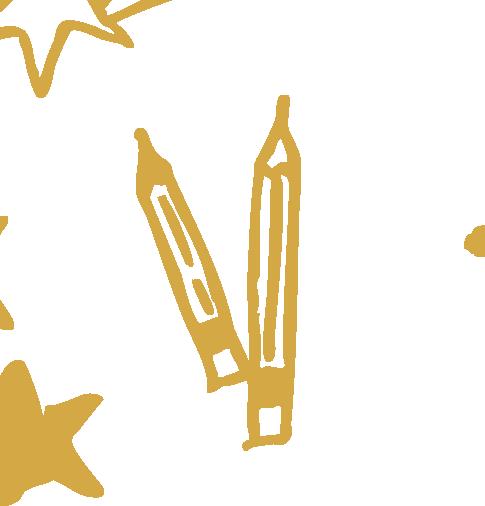







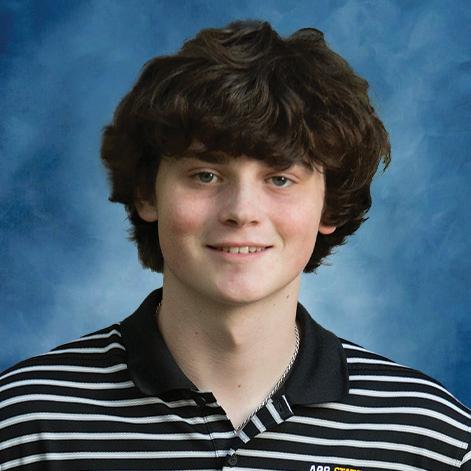












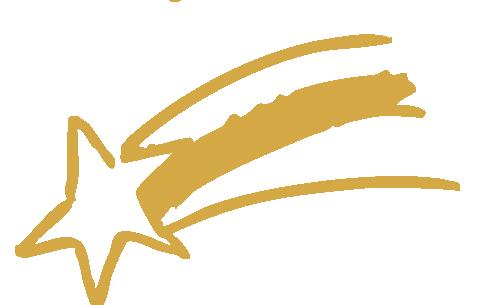


MEET THE ED BOARD



TRANSLATIONS EDITOR

VISUAL MANAGING EDITOR


GRAPHICS EDITOR

BUSINESS MANAGER
ASSOCIATE GRAPHICS EDITOR

PHOTO EDITOR

MULTIMEDIA EDITOR

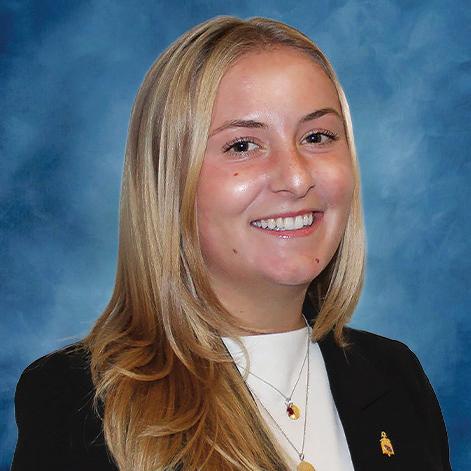
ASSISTANT BUSINESS MANAGER
DIGITAL MARKETING DIRECTOR

ASSOCIATE PHOTO EDITOR


ASSOCIATE MULTIMEDIA EDITOR



DIRECTOR OF MARKETING & ENGAGEMENT

Abby Buckner | Managing Editor
From swiping IDs to hauling storm debris, App State students stay busy not only with classes or club meetings, but also with jobs that keep the campus and community running. With thousands of roles to fill each year, student employment is baked into the university’s ecosystem.
Holly Benson McQueen, the assistant director of student employment at the Career Development Center, said student employment is “a big attribute to the campus,” with over 6,000 jobs between the Boone and Hickory campuses.
According to the National Center for Education Statistics, about 40% of full-time undergraduate students in the United States work while enrolled.
Student jobs in Boone come in all shapes and sizes: on-campus roles, offcampus work and federal work-study positions.
Students who qualify for financial aid may be eligible for federal work study, a program that offers part-time job opportunities as part of their aid package.
“Federal work study is a different
pool of money that the department gets to pay that student out of, which allows them to hire more students,” McQueen said. “And in turn, that allows more student employees.”
But knowing what someone is eligible for — or where even to begin — isn’t always easy. Finding the right job can feel overwhelming, especially for new students. That’s where the Career Development Center steps in.
Located on the second floor of Plemmons Student Union, the Career Center helps students connect with employers through Handshake, PartTime Job Fairs and resources like the Odd Jobs forum, a Google form where members of the community can post short-term tasks.
“There’s oftentimes a disconnect between students and finding the right position for them, so we like to serve as a connection for them,” McQueen said.
After Hurricane Helene, locals used Odd Jobs to ask for help clearing debris. Students stepped in to assist.
“It was a big heartwarming moment to see the community come together through it,” McQueen said.
One of the biggest benefits of
student employment? Flexibility.
“That’s the beauty of it. You can go to class, then go to work and then go back to class,” McQueen said. “Or pick up multiple positions that work for your schedule. It’s really just where can student employment fit for you? It’s not a one-size-fits-all.”
McQueen said certain times of year, like football season or the start of the spring semester, often bring an increase in student workers as they get settled into their routines and feel ready to add work to their plates.
Sydney Bean, a senior marketing major, currently assists Campus Dining’s student employment coordinator, Allen Trivette. She started with Campus Dining her freshman year and has spent the past several years in various roles, including student employee, manager at Park Place at the Pond and now office assistant for the past three semesters.
Bean said her time with Campus Dining helped her come out of her shell and taught her how to balance work with the rest of student life. She said the teamwork skills she has learned while jumping in to help others during lunch rush
and collaborating with others is “invaluable.”
“Teamwork is about communicating, listening, and uplifting each other while we work together towards a common goal,” Bean wrote in an email. “No matter what position you are in, teamwork is important. Kindness goes so far and there is always something to learn from others.”
make students more competitive candidates. The National Association of Colleges and Employers reports nearly 91% of employers prefer that candidates have work experience.
That experience doesn’t have to stay on campus. Many students work off campus in Boone at restaurants, ski resorts or other local businesses to earn income. Others take on internships, paid or unpaid, to meet academic requirements or explore potential career paths in areas related to their major.

Beyond paying the bills, student jobs can be a game-changer when it comes to career readiness.
According to the Career Development Center’s website, “increased career readiness skills and experiences upon graduation” help
Working on or off campus helps students develop real-world skills — many of which align with the National Association of Colleges and Employers competencies, including communication, professionalism, leadership and teamwork.
“It’s a great feeling to know that we’re connecting students to the community while also helping them provide for themselves as well,” McQueen said.

Madalyn Edwards | News Editor
Every day, leaders at App State make decisions that influence over 21,000 students. From construction projects to academic policies, these decisions are made by leadership boards composed of many different representatives.
At the top of App State’s leadership team is Chancellor Heather Norris. She was voted on and appointed to the position in 2025 by the board of governors, who oversee operations of the UNC System.
Norris was first employed by App State in 2003 as an assistant professor and worked her way up to the position of interim chancellor in the spring of 2024, then named chancellor on March 1.
In addition to Norris, 12 members serve on the Chancellor’s Cabinet, who help oversee operations in their respective fields or departments.
Among these members is Neva J. Specht, who serves as the executive vice chancellor and provost. Her responsibilities include managing the university’s “academic enterprise,” as well as enrollment management and student affairs departments.
JJ Brown serves as the chief operating officer and executive vice chancellor, and “focuses on the challenges and support of today’s student in a complex learning environment,” according to his App State biography.
Another member of the cabinet is Johnny Brown, the director of public safety and chief of police. Brown was officially appointed to the position in September 2024.
The remaining members include:
• Chief of Staff Dawn Antonucci
• General Counsel and Vice Chancellor of Institutional Integrity Kristen S. Bonatz
• Director of External Affairs and Community Relations Matthew T. Dockham
• Director of Athletics Doug Gillin
• Director of Chancellor Communications Megan Hayes
• Vice Chancellor of Research and Innovation Christine Hendren
• Interim Chief Financial Officer Greg Lovins
• Vice Chancellor for University Advancement Will Sears
• Chief Information Officer Keith Werner
Another governing body, the board of trustees, serves to advise both the board of governors and Norris. The 13 members are appointed on the basis of four-year terms, as well as one voting representative of the Student Government Association of App State. These members include:
• Chair Mark E. Ricks
• Vice Chair R. Thomas Sofield
• Secretary James E. Harris
• SGA Student Body President and voting representative Nicole Tran
• J. Jeffries Chesson
• Tamela Everett
• Anita Greene
• James K. Reaves
• Jamie Schaefer
• Kimberly M. Shepherd
• Wayne Sumner
• Will Warren
• Steven D. Wyatt
Students are also eligible to hold leadership positions at App State, whether that be through club leadership opportunities or organizations such as SGA. App State’s current SGA Student Body President and Student Body Vice-President are Nicole Tran and Courtney Castellow. The Assembly Speaker position is currently held by Hampton Smith, the Deputy Speaker position is held by Julia Graffeo and the Assembly Clerk position is held by Erin Petherbridge.

Together, the leaders of App State help make decisions directly related to the advancement and development of App State. Students wishing to contact any members can find their contact information under each staff biography on App State’s administration website.


Matt Howe | Associate News Editor
On Grandfather Mountain, six bears live: Carolina, Yonnie, Kody, Smokey, Flower and Fanny May. Whether it’s a tablespoon of honey water, a refreshing dip in the pool or long day sunbathing, the bears are always busy. But who takes care of them?
Keepers Alyssa Iampietro and Skylar Walker are ready to face whatever bear necessities come their way.
Iampietro, App State class of 2022 alumna, has worked at Grandfather Mountain for over two years. A biology major, Iampietro said she wasn’t sure what career path she wanted to follow when she first arrived at App State. Through Handshake, she found an internship at the North American Bear Center, which at the time housed four rescued black bears. She spent that summer working with the bears and teaching educational programs.
“I loved it,” Iampietro said. “I was like, ‘This is it. I love bears. Bears are my favorite animal.’”
Walker, App State class of 2024 alumna, began working at Grandfather Mountain just after graduation. Having an extensive background in reptile biology, Walker said the transition to mammal biology was a significant learning curve.
Before Grandfather, Walker worked as a tortoise research technician at the University of Georgia and spent time in Belize conducting crocodile research.
“I really wanted to be able to broaden my horizons and say that I’ve worked with multiple different species than just reptiles,” Walker said.
While Grandfather Mountain doesn’t have designated “bear keepers,” Iampietro and Walker work with individual bears, handling everything from feeding and socializing to training.

Iampietro said each bear is assigned a specific trainer. For her, Smokey and Flower are the bears she spends the most time with. The goal during training sessions is for the bears to be able to “participate in their own care.” That includes showing them their paws and teeth during veterinary exams.
“If they are helping us with those things, we don’t always have to sedate them,” Iampietro said. “Putting them through those procedures comes with quite a lot of risk because there’s a lot of variables that we can’t control in a zoo like you could in a standard vet office.”
When Walker first began at Grandfather Mountain, Iampietro took the lead with Smokey while Walker became her “secondary” caretaker. Since then, Walker has been the primary trainer for Carolina, the oldest bear at Grandfather Mountain.
Walker said the trainers do “Overlook Trainings,” where the public can view the bears in their habitats. One of Carolina’s newest behaviors is waving to guests at the park.
Walker said Carolina “very much likes to show off” and is a “sassy old lady.” Iampietro said Carolina “has her opinions and does not hesitate to let you know what they are.”
Kody and Yonnie, the second oldest bears at Grandfather Mountain, arrived as a pair from a facility out west in the 1990s to 2000s as part of a now completed conservation program to rebuild the local black bear population.
Iampietro said Kody and Yonnie have lived together their whole lives as mates. Kody is the only male bear at Grandfather Mountain and, as Walker describes, a “scaredy cat.”
“He is really special because he is also something called a cinnamon phase black bear, which means he is a black bear with a brown coat, which is particularly rare on this side of the country,” Iampietro said. “It’s a little bit more common out west and up in parts of Canada. But over here, it’s a very, very small percentage of black bears that have that brown coat.”
Yonnie is what Iampietro described as “the sweetest bear” but “not the brightest bulb in the bunch.” She can be identified by the large white patch on her chest.

Smokey and Flower work alongside Iampietro in their training sessions. Smokey and Flower came to Grandfather Mountain as cubs and have lived together ever since. Iampietro said this is uncommon, as black bears are solitary animals.
“Smokey and Flower especially are strange because they’re both females, and females are the territory holders in the black bear world,” Iampietro said. “There’s typically only going to be one female per territory unless there is a mom with cubs. So, for two females to share a territory is quite extraordinary for black bears as a species, so it’s really awesome to see those two maintain their friendship even into their older age.”
Walker said while Flower is laid back, she has her “sassy moments”
— unlike her sister Smokey, who is consistently sassy.
And then, there’s Fanny May, the youngest of the bears on Grandfather Mountain at eight years old. Because of how young she is, Iampietro and Walker said she is much more energetic. Iampietro said she considers Fanny May to be the “smartest animal on the mountain.”
“She’s a little bit of a trouble maker and she definitely defends her territory,” Iampietro said. “Because of that, she does not get along very well with pretty much any of the other bears and is known to frequently share unkind words with them at the fences.”

Iampietro said the bears at Grandfather Mountain don’t hunt animals, so when a guest approached her with concern, she was surprised.
She said a guest told her Carolina had “got a bird.” Iampietro said she thought they were “yanking her chain.”
“Carolina’s 28. She doesn’t even like to get up for anything. That bear is not hunting birds,” she said.
She said then a volunteer at Grandfather Mountain approached her with the same message: “Dude, Carolina just totally ate a bird.”
Iampietro said Carolina has no teeth. Her caretakers soak her food so she can eat it. Iampietro said she thought it had to be an elaborate prank.
“He told me from his first hand account that she was just sleeping and a bird wandered up to her right by her face and she just opened her eyes, grabbed it, stuffed it in her mouth and swallowed it whole,” Iampietro
said.“Later that day, I went into her habit and there was just a little pile of feathers where she was laying.”
Iampietro said every time she looks Carolina in the eye she thinks about that moment, because it was unlike anything she’d seen a bear do.
Grandfather Mountain, along with much of Western North Carolina, was affected by Hurricane Helene. Iampietro said they were “incredibly lucky.” She added she was certain that, once they reached the mountain, fences would be damaged and an animal would have escaped.
“I couldn’t get in contact with really anyone except for a few of my close friends that lived in Boone with me,” Iampietro said. “So I said, ‘Hey guys, I’m going to try and get up to the mountain today. Who wants to come with me in case a bear got out?’”
She said they wanted to lay eyes on every single animal and check the fences. Aside from downed trees on
the pathways, the fences remained undamaged.
“We had finally been able to get eyes on every single animal except for one. We could not see Fanny May, the really crazy rambunctious young bear who is known for her trouble-making,” Iampietro said. “So instantly, we were a little bit nervous because we were like, ‘Oh gosh, of course if anyone’s going to get out, it’s going to be Fanny May.’”
She said despite no downed trees in Fanny May’s enclosure, they still couldn’t see her, until Iampietro called her name. Fanny May poked her head out from behind a tree, sat down, and began whining.
“It was so sad to see this bear who is typically, again, very energetic. She was just being so sweet, it really broke my heart,” Iampietro said. “She was probably so scared, but it was that moment that I was like, ‘Oh my gosh, everyone is okay. I can’t believe that this happened.’”


‘We’re
Madalyn Edwards | News Editor
It’s the last few weeks of summer break, and the residence halls of App State are dim and silent. But make no mistake — while App State’s incoming freshmen are at home finalizing their packing list, a team of residence assistants are busy making their final preparations to welcome new students to their new home for the next academic year.
App State currently has 147 student worker RAs who work in 18 different residence halls, according to Jimmy Kramer, assistant director for residence life. While the ratio of residents to RAs can differ, the average number of residents each RA is responsible for is around 40-60, according to University Housing.
“RAs build community in many ways but some of the ways we ask RAs to intentionally build relationships with residents are through intentional conversations, floor and building wide programs and generally supporting students through the day to day
events of living on a college campus,”
Kramer wrote in an email.
Additionally, RAs rotate the role of answering the duty phone for each residence hall, speaking with and responding to the needs of each caller, according to Kramer.
Stevie Watson, a senior interior design major, is a second-year RA in Summit Hall. Watson said this year, they are responsible for 35 residents. Watson decided to become an RA after their roommates moved out. Because they are drawn to building connections, they applied and completed two weeks of training during the summer in preparation for incoming residents.
Some of the training, Watson said, focused on handling different scenarios, including roommate conflicts and emergencies.
Kramer wrote that the training process begins three weeks before students move in for the fall semester.
The first two weeks are primarily dedicated to training, and the final

interacting with residents even outside of residence halls when they are out and about on campus.
week is dedicated to helping students move in and acclimate. Ongoing RA training meetings and sessions are held throughout the academic year.
Even if the role of an RA doesn’t involve seeing some conflicts through the entire process, Watson said RAs are the first to know what is going on and act as “the front lines.”
From there, RAs can loop in staff members from higher positions such as graduate assistants and coordinators to handle issues, if necessary. Watson said they learned how to fill out incident reports during their training, which are then sent to the appropriate person or resource.
Other responsibilities Watson learned during training were sociograms and check-ins. Every six weeks, Watson will have one-on-one meetings with residents, taking care to check in with each student.
Even the smallest interactions, such as a smile or quick greeting, make a significant impact, Watson said. They also try to make a point of
Another responsibility of RAs is to connect students to resources. Watson likes to host educational events to pair students with resources, and will collect flyers from different campus organizations, such as the Office of Access and Opportunity: Disability Resources, Counseling & Psychological Services, campus food hubs or the Career Development Center, and post them frequently in their resident hall.
Watson said their job as an RA can be stressful, especially when they recognize it’s time to take a step back and reach out to other resources to aid students, which Watson said they are instructed to do during training.
“You can’t really overstep as an RA, because then it just gets too much mentally, and it’s also sometimes physically taxing, especially if you have multiple things going on,” they said. “Even being a student, it’s hard because it’s my senior year.”
Watson said if a student came to them with a conflict, they would listen and ask if the situation is something the student wanted to handle themselves or seek help from an RA. They said this approach encourages students to communicate with others and problem solve themselves, while still supplying them with support and resources.
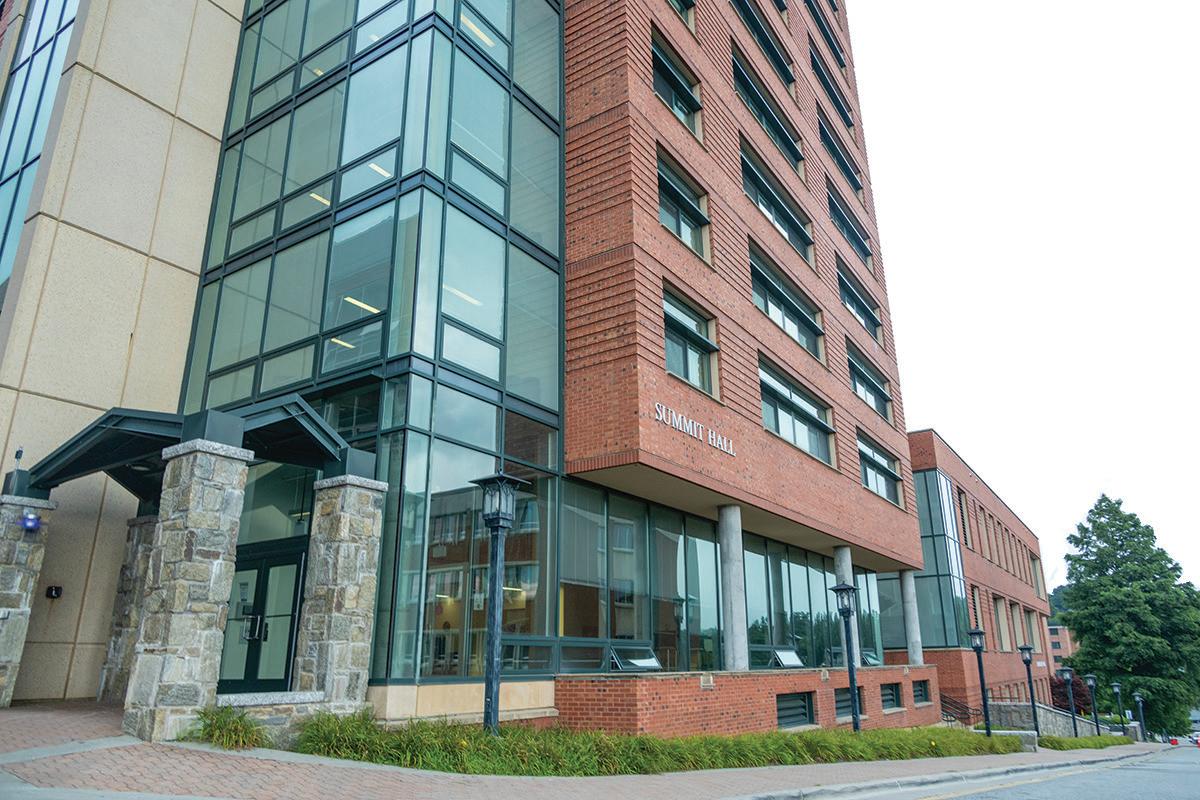
According to Kramer, RAs serve as a primary resource to help students adjust, but also to help develop potentially life-long friendships.
“The role RAs take on is very dynamic and at times can be demanding. These student leaders work incredibly hard to make a positive impact on the residents on their floor and in their building,” Kramer wrote. “We are very appreciative of the efforts that they make throughout the course of the year as they create a welcoming community for all of our residents.”
For Watson, one of the most rewarding aspects of their job is when they get to see students acclimate to college life.
“It’s definitely rewarding when you see them grow,” they said.
Watson said they also enjoy hearing updates from students about their academic journey, such as selecting areas of study or a major.
“I’m just happy that I’m there as an RA to at least help my residents, even if it’s a little amount,” they said.



Owen Marcellino | A&C Editor
Upholstered in forest green, the seats at The Appalachian Theatre of the High Country await any cinephile, theater junkie or fan of live music.
A notable landmark of downtown Boone, Appalachian Theatre has a rich history filled with local stage plays, blockbuster hits and rising stars all underneath its glowing marquee.
According to their website, the theater was built in 1938 as a roadhouse for smaller acts traveling through the Blue Ridge Mountains.
In January of 1950, an unattended popcorn maker ignited a fire that spread throughout the theater’s auditorium. While there were no casualties, the damage to the building took five months to repair.
The theater returned with a curved apron stage, a CinemaScope screen — producing widescreen pictures — and Art Deco sconces, which can still be found in the theater today. While these updates helped
attract a larger audience, cinema and the film industry continued to develop, rendering these updates obsolete by the late 1970s.
Suzanne Livesay, the executive director of Appalachian Theatre, said the rise of in-home televisions reduced the theater’s ticket sales, prompting them to reduce prices and become a budget theater.
“We get so many former students from App ‘I remember this place when the floors were sticky and it was the dollar theater.’ They all say the dollar or budget theater, second run theater, and we still are a second run theater,” Livesay said.
As an independent theater, decreasing sales and the growing presence of multiplex theaters near Watauga County led the historic theater to close in November 2007.
After it was sold to a Florida developer, the interior of the theater was stripped with the intention of turning the building into a speakeasyesque performance hall. This rebrand
ultimately slipped through the cracks of bankruptcy and any plans of construction went static for years.
In 2011, a town hall meeting was held at the Watauga County Public Library where community members, alongside local legends Doc Watson and John Cooper, voiced their support for the theater to be revitalized.
The town of Boone purchased the building and embarked on a journey of reinvention, restoring the venue as a reflection of its historic beauty while embracing the changing culture of creativity in the High Country.
Appalachian Theatre strives to create a space for young artists of all disciplines, stretching their stage beyond the curtains of cinema. In February, the theater hosted NouN, App State’s Improvisational Comedy Troupe, and in April, they opened their stage to VoiceMale, App State’s premier all-male a capella group.
Following their debut performance at the theater in February, NouN sold out the Community Room at
Appalachian Theatre, a smaller venue located on the second floor of the building.
“I’m a big huge fan of improv being a theater person,” Livesay said. “So I said, ‘What if we have you try it once? and I’ll give you the space,’ and that was the deal. As I said, ‘I’m going to take the risk because I believe there’s an audience for this. I’ll give you the space if you will come do it.’”
Livesay said NouN was redirected to perform in the main auditorium for future shows after selling out the community room, scheduling four shows for the upcoming fall semester.



Abby Buckner | Managing Editor
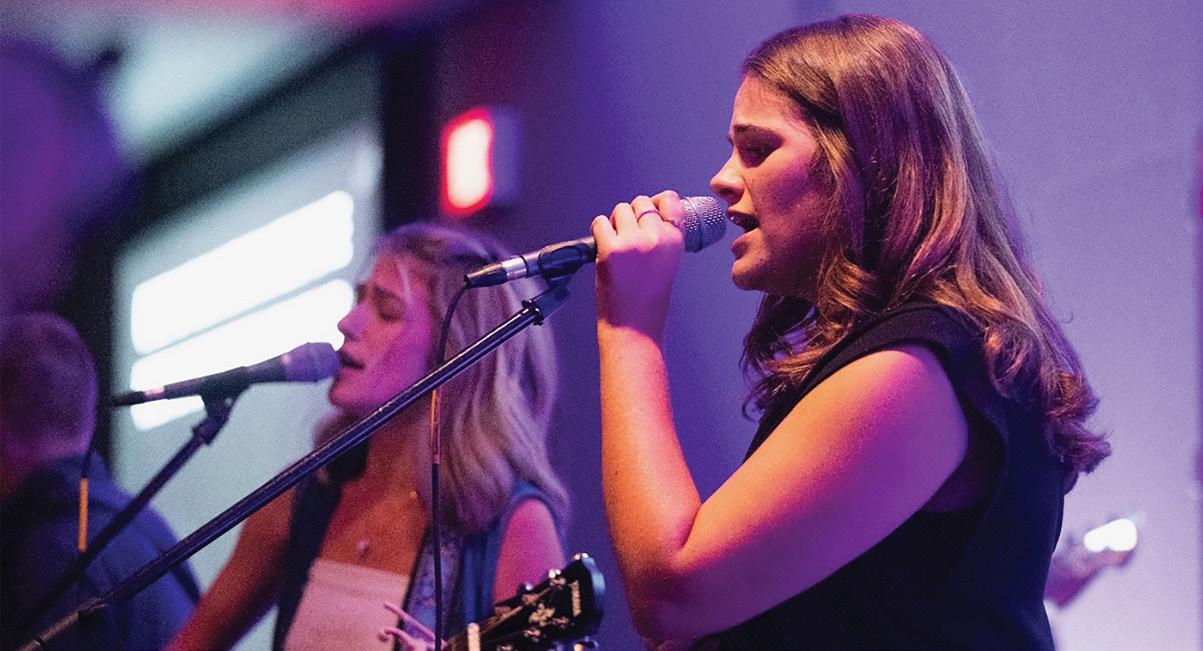
ASLA also acts as a connector between students and resources, including counseling and other campus services.
“We want students to feel these are safe spaces to share what’s going on. If they need counseling or another kind of support, we’ll help them get there,” Smith said.
Haas described ASLA as “a dotted line connection to the university,” helping to provide spiritual support while giving students freedom to define what that means for themselves.

A quiet hike. A late-night conversation. A weekly service. Students at App State engage with spirituality in ways that are personal and varied.
Spiritual wellness is one of the eight dimensions of wellness outlined by App State’s Wellness and Prevention Service, defined on its website as “the intersection of an individual’s values and beliefs that provides them with an understanding of their purpose in life.”
That purpose can take many forms — on campus, in nature or in everyday moments.
“Some people can go for a hike or watch the sunset, and that’s their spiritual moment,” said Judy Haas, the dean of students.
Support for spiritual life at App State includes the Appalachian Spiritual Life Association.
According to its website, ASLA “promotes a spiritual climate” and provides “a safe and nurturing environment” for students’ spiritual growth and development.
“We are all like this great big puzzle. There’s occupational, physical, social, emotional and there is a part that is spiritual,” Haas said. “We all have to define what that means for us,
it is part of who we are.”
Founded in the 1980s to unite campus spiritual groups, ASLA connects 16 member organizations under one umbrella. These groups range across different faiths and belief systems, and all agree to a set of bylaws. To join, organizations must go through an application process. According to their bylaws, a nonstudent representative is designated by the governing body of the student group to represent the organization.
ASLA meets monthly to discuss events such as the Appalachian Spiritual Life Fair, held every August to connect students with spaces to grow their spirituality, and other interfaith gatherings.
“Posthurricane, we held a candlelight vigil on that first day back to school,” said Juston Smith, ASLA president.
“It was not a specific religious group that led; we were under that umbrella.”
Smith said the group is working to reestablish its presence and clarify its role for students.
“Our goal starting this summer is to work on our unified front and do things in how we represent ASLA to students on campus,” he said.
While ASLA connects many campus-based spiritual groups, it doesn’t encompass all of them. Jesse Vinson, associate director of Campus Activities - Clubs & Organizations, confirmed in an email that Engage currently lists 23 registered religious and spiritual organizations.
Some of these groups operate independently from ASLA while still offering space for worship, reflection and community. Others maintain ties to local houses of faith in Boone.
Off-campus organizations like the Temple of the High Country, the Islamic Center of Boone and Boone United Methodist Church regularly engage with students through services and events.
For sophomore psychology major Gabi Derrow, seeing the Temple of the High Country while driving down King Street for the first time was an unexpected comfort.
“My mom was like, ‘Oh my gosh, I cannot believe this,’ and when my dad came to visit, I got to bring him to services that weekend,” she said. “It felt really nice knowing there was a place for us here.”
Derrow is the president of App State Hillel, the university’s Jewish student-based organization. She said the presence of Jewish spaces was a consideration in her college decision.
“Coming to college, we were very worried about having a safe and welcoming environment because nowadays on college campuses, you can see a lot of antisemitism,” Derrow said. She said having an active Hillel and a synagogue nearby has made her feel more connected and supported at App State.
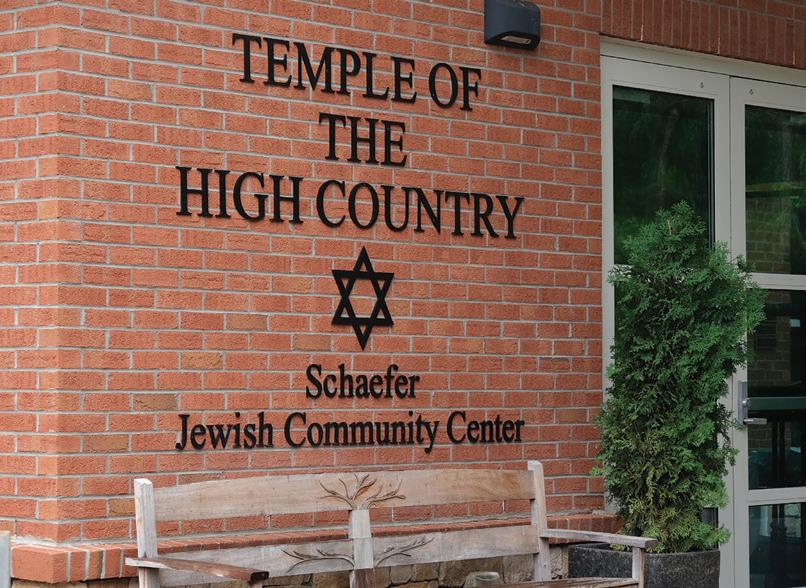
For her and others, Hillel creates a space where students can connect, whether through holiday celebrations, social events or simply shared understanding.
“Whether or not you’re super religious or spiritual,” Derrow said, “you can still find a community and people that are there for you.”
Ginny Vellani, the director of North Carolina Hillel Link, emphasized the organization’s openness. “Hillel is a resource for any student on campus,” Vellani said. “Whether they want to learn more about the Jewish community or a connection they have, we’re happy to be an educational resource for other groups or communities that want to learn more.”
The spirit of openness, she said, extends to interfaith engagement through ASLA.
“Whatever community you’re a part of, whether you’re identifying with it religiously, spiritually, culturally, there are ways to work together as an interfaith community,” Vellani said. “Even though there may be differences, we can find a lot of commonality and a lot of common ground.”
For some students, religious organizations play a central role in building community and navigating the challenges of college life.
Jameson Apple, a sophomore building sciences major, said Cru — a
Christian campus ministry — has shaped a large part of his time at App State.
“Honestly, I’m not sure if I would still be in college right now if it wasn’t for Cru,” Apple said.
He described finding a community through the organization’s weekly gatherings, small groups and mentorship. For Apple, faith became a grounding force during moments of stress or uncertainty.
“College is a time where you can form yourself, your beliefs, and ultimately your personality comes out a lot in college, and faith can be the root of that,” Apple said.
For students looking to explore or grow their spiritual life at App State, help is just a conversation away.
“I think that would be the greatest route a student can take, no matter where they’re at — to go to the third floor of the union to the Dean’s office and say what they need, and I guarantee they will get where they need to be,” Smith said.
There’s no single path to spirituality on campus. Whether through formal worship, quiet reflection or shared community, students are encouraged to find what resonates with them.
“It’s the ‘Who am I?’ and that’s what college is all about,” Haas said. “Hopefully, by the end of your time here, that’s when you become more affirmed of who you are and what that looks like.”


Meg Frantz | Editor-in-Chief
Unexpectedly moving from a classroom to a dorm building wasn’t easy for Mazzy Patella, a senior studio art major. She said there was a disconnect between students, since the department had a pod system for their classes except for critique times.
Patella said there were four dorm rooms per class and the students in each pod didn’t interact with their classmates unless they walked into another dorm room.
The App State Department of Art has been in Wey Hall since its construction in 1976. The building hadn’t been renovated until January 2024, and after safety concerns were brought forward by students and a faculty member, the art department
“It was like, all 15 of us circled around together crowded in one dorm room,” said Jasper Gonzalez, a junior studio art major. “We were shoulder to shoulder and it was kind of hot and I just remember being like, ‘This is kind of funny.’”
The re-opening of Wey Hall brings the department back to its permanent home. The renovations will “offer modernized spaces for both teaching and engaging in art and design,” according to App State’s website.
The first floor will house a sculpture, metals and ceramics studio, with a covered outdoor kiln area, space for enameling, a spray booth and other larger work spaces. The first floor will also have a wood shop, department chair office and the Cathy P. Walling Student Art Gallery, “the first dedicated student exhibition space in the art program’s history,” according to AppalachianToday.
The second floor focuses mainly on art education, fibers and printmaking, featuring a darkroom

travel course where students meet professional artists and see how they work and then a period of study on Penland’s campus.
“There was an option when I was there to do a work study, so I was working in the dish room, doing dishes, and then I would go sew for a couple hours,” Mallin said. “It’s an intensive focus on learning craft and learning through just experimentation.”
A self-proclaimed perpetual optimist, Mallin said he figured the move from Wey Hall to East Hall was more “quirky” than anything else. He attributed the success of the art department during its time in East Hall to the dedication of the faculty and staff.


Patella said an important aspect of art is photographing the final product.
“It’s documentation, and also just when you have a finished piece, looking at it on a white wall with good lighting is completely different,”
The third floor has a graphic design studio, painting and drawing studios, as well as a Synergy print and fabrication lab and another critique
Another opportunity for art students is the Penland School of Craft program, run by IlaSahai Prouty, an associate professor of studio art. The program is semester-long at the Penland School of Craft in Spruce Pine, North Carolina, where students study immersively in their field and take cross-disciplinary
Jamie Mallin, a senior studio art major, participated in the Penland program with a focus on fibers. He said the program consists of a two week
“Everybody is coming to work every day with the intent of letting their students get the most out of it that they can, so I’ve just been so grateful for my faculty,” Mallin said. “The move in, while that seems like the end to me, especially because of just time wise it’s the end, like this is my last semester, but this seems like the closing of a hectic chapter.”
Callum Conklin, a May 2025 graduate with a bachelor’s degree in both geology and studio art with a concentration in ceramics, found that they benefited from their geology education in their pursuit of ceramic creation.
“Ceramics is geology, right? Clay is dirt,” Conklin said. “We study clay in geology class and sedimentology and stratigraphy. There’s another class that’s about the thermodynamics of mineral formation, which is heat and pressure and how that changes the chemical bonds, and that is the same thing as cooking clay in a kiln.”
Conklin said their art acts as a healing process, and they believe good art makes people ask questions. They see their art functioning within a climate where politics and art are inextricably linked.
“You can think that you’re making non-political art but it doesn’t matter what you make, it matters what the politics are, and there is a long running history of fascism as an anti-


art movement and an art controlling movement,” Conklin said. “We have art history classes that focus on degenerate art, which is what Hitler called any art about queerness, about any sort of class disruption, any art about people of color.”
Mallin said they found their art’s connection with the world when they were at Penland, where, among unrest and residual issues, they resorted to having fun with art.
Mallin said “playing” is important to what art is and should be.
“Not just play instead of working, but play as active protest of work or as protest of oppression or things, just having a good time purposefully, and understanding that humanity and the arts are tied together into that is the whole point.”
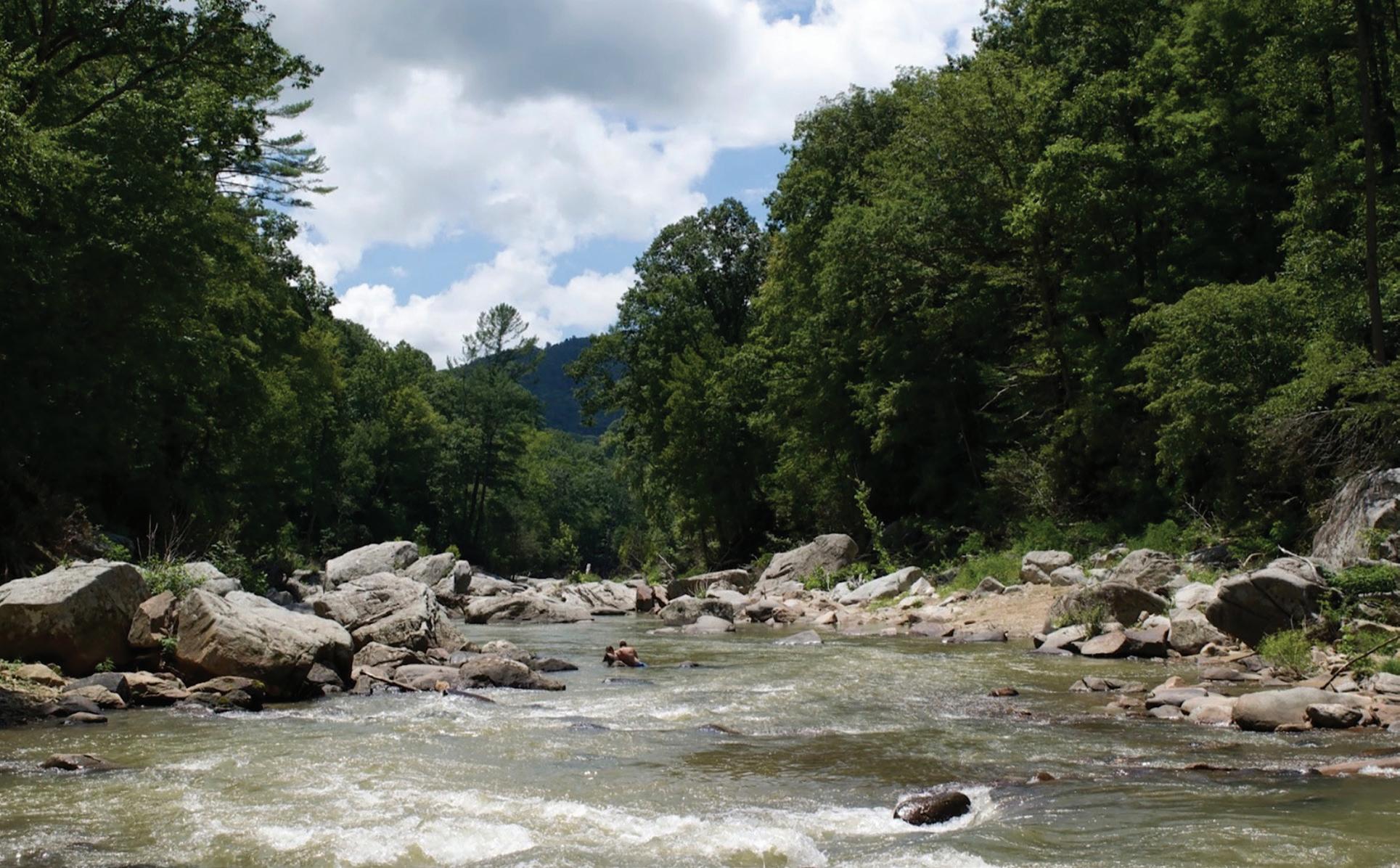
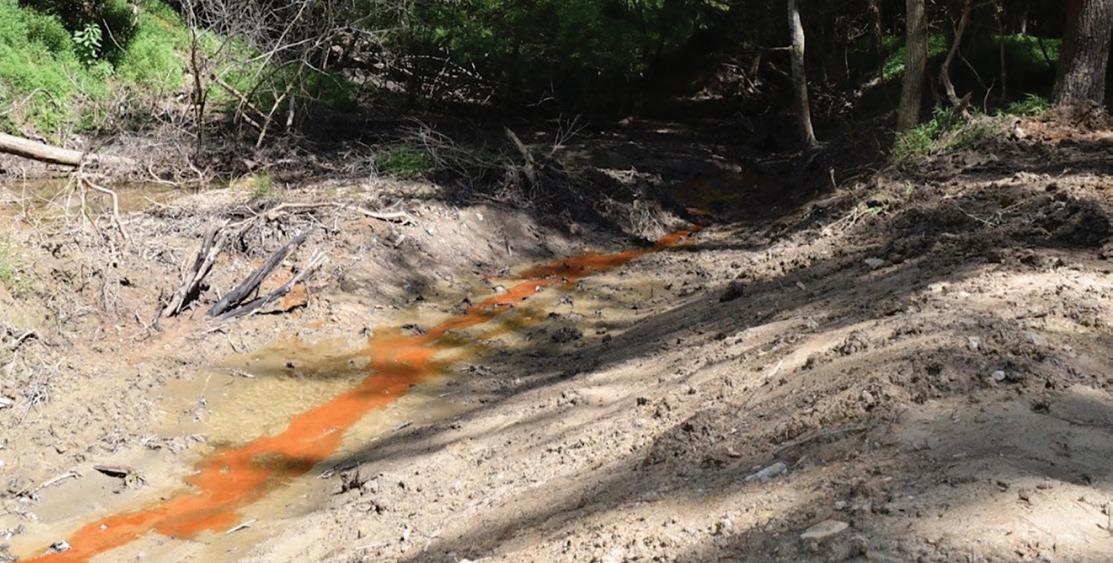

Beatrix Johnson | Reporter
Hurricane Helene hit Western North Carolina Sept. 27 with three days of heavy rain, permanently altering the infrastructure and geography of the area. According to the North Carolina State Climate Office, Watauga County received 16.67 inches of rain from September 25-27, totaling 11 inches more than the county typically receives during the entire month of September.
This record flooding altered the geography of Boone’s waterways, many of which are still recovering nearly one year later. Locations along the Watauga River, such as Guy Ford River Access and Laurel Creek Falls, popularly known as Trash Can Falls to locals, have been permanently changed by the storm.
Andy Hill is the High Country regional director and Watauga riverkeeper at MountainTrue. As riverkeeper, he oversees the watershed, which includes everything from collecting data on water quality to educating people about the rivers.
“The greatest impacts from the storm have been from impacts to infrastructure like damage to septic and wastewater treatment plants that are causing ongoing water quality impacts,” Hill wrote in an email.
“There is still a significant amount of storm related debris and trash in our waterways and on the banks.”
Post Helene, Hill has conducted reports on the quality of water systems in Boone, including the South Fork New River and the Watauga River. These tests include information on levels of sedimentation pollution that evaluate the safety of the water. Each week, Hill updates this information in the Swim Guides, which can be accessed through the MountainTrue website and the riverkeeper’s Instagram.
“There are numerous systems discharging poorly treated or untreated waste into our waterways,” Hill wrote. “That is why Swim Guide is such an important program.”
South Fork New River is one of the major rivers in Boone. It flows around the whole town, all the way from the Ted Mackorell Soccer Complex to the Boone Greenway.
Six months after the storm, graduate student and political science and data analytics double major Luke Barber was enjoying a walk along the Greenway when something caught his eye. Looking down, he saw that trash overwhelmed the river, swamping along the riverbanks and into the water. In response, he and some
classmates started Clean Waterways of the High Country through Advanced Environmental Politics, a class held by Professor Tatyana Ruseva.
“There were all these different places around the area that really could have used some volunteers and some extra hands to clean up and restore the rivers to what they were before the storm,” Barber said. “I know a lot of folks in this area take a lot of pride in the natural environment and obviously that’s why so many people come here to go to school.”
During the summer and fall, tourists travel from all over to see the natural beauties of the area in full bloom.
“I think it’s very important and our responsibility as people to take care of our natural areas,” Barber said. “With Hurricane Helene specifically, the amount of devastation it caused and the amount of debris and pollution it deposited into areas that were once, you know, pretty presentably taken care of, was very disheartening.”
New River Conservancy is a nonprofit organization that shares a similar mindset. Andrew Downs, executive director and App State alum, said he was wary to start cleaning the rivers due to the displacement the community was
going through immediately following the impact of the storm. But many in the community felt ready to take action right away.
“What we learned really quickly was that people viewed the river itself as a member of their community,” Downs said.
So after one month, they decided to start cleaning the rivers.
“We’ve had as many cleanups in 2025 as we had in all of 2024 already,” Downs said. “And we’re just halfway through the year.”
Despite the devastation of Helene, the river systems have made a successful turn around since the storm.
“What we’ve seen is that the river, because it is so rural and wild and undeveloped in a lot of places, rebounded really quickly,” Downs said.
At MountainTrue, Jon Stamper leads as the river clean-up coordinator. With the help of full time staff and dedicated volunteers, Downs said the organization has picked up about 2.8 million pounds of trash out of the waterways.
“Over 500,000 pounds of that has been hand picked,” Stamper said.
During the last 10 months of cleaning the trash, there were several items they chose to keep. While most of the trash is taken from the water
and thrown away, items such as photo albums are set aside. Mandy Wallace is a staff member in charge of seeking out the homes of these items.
“We find so much stuff,” Stamper said. “It’s people’s lives. Nobody meant for that trash to end up in the river. It was taken away from them.”
Hurricane Helene is an example of the effects that climate change has had and will continue to have on the modern world. According to the National Oceanic and Atmospheric Administration, the rainfall from the storm increased due to climate change.
“Climate change and development are impacting the Watauga and New Rivers at a rapid pace,” Hill wrote. “Thoughtful and intentional actions taken now will help us build resiliency for the next storm.”
Recovery from a storm as large as Helene will be a long road. As a community, there are steps to be taken to help ease the process.
“Rivers are resilient,” Hill wrote. “We expect they will recover if we do our part to monitor water quality, reduce harmful discharges and erosion and plant native species along the banks.”

Parker Egeland | Reporter
Rivalries are at the heart of sports, built on history, competition and pride. From the Yankees and Red Sox to Real Madrid and Barcelona, iconic matchups between teams with deep rooted animosity fuel some of the biggest rivalries in professional sports.
In college, rivalries are key to the environment of the game. Teams that are close in both history and geographical proximity fuel the fire, and App State is no exception. With multiple rivalries from the time the school was founded to newer clashes gaining momentum, the Mountaineers have no shortage of competition.
“I think the best single word is energized,” said Ryan Ray, a senior communication major and president of the Student Yosef Club.
“Everything top to bottom during a rivalry game in Boone is just over the top full of energy and full of life.”
App State and Georgia Southern met for the first time 93 years ago,
when both schools were known as teachers colleges. The two didn’t cross paths on the gridiron again until 1987, when the Mountaineers defeated the Eagles in the Division I-AA playoffs. Today, the “Deeper Than Hate” rivalry has been played every year since 2013, and the series sits at an even 13 wins apiece.
“It’s called deeper than hate. We just hate them so much, it’s just so intense and I think it’s our biggest rivalry,” said Meredith Roberson, a senior exercise science major.
Coastal Carolina has quickly become a high profile rival for App State since joining the Sun Belt Conference in 2016. The two schools have faced off every year since 2017, with the series currently tied at four wins each.
The Black and Gold have lost the previous three contests to the Chanticleers in high scoring thrillers, with Coastal Carolina storming the field in each of their last two home wins.
Ray has been involved in some of the historical and emotional ties with the rivalries of Georgia Southern and Coastal Carolina.
“I think those emotions are really brought on by a closeness between our football program and our athletics department with Boone and Appalachian communities as a whole,” Ray said. “Schools like Georgia Southern or Coastal Carolina, where, over the past decade or so, those rivalries have been developed in a way that is unmatched, especially at the group of five level.”
The Black and Gold have several in-state rivals that have become prominent over the last couple of years. One of these rivalries includes East Carolina, which the Mountaineers have beaten each of the past two years.
The matchup at Kidd Brewer Stadium in 2023 resulted in App State’s record-tying attendance with 40,168 fans at the game, and it ended with a 43-28 win for the Mountaineers.
Redshirt senior defensive back Jordan Favors recorded his first career interception in the game, a special moment for him in front of the record crowd.
“It felt like life, it was so beautiful,” Favors said. “Sometimes when you make a play like that, you can’t even hear your teammates’ reaction. Ongoing spouts of joy for you, and then going to the sideline with
Carolina back to its schedule in 2028. The teams haven’t played since 2013, and the winner will take home the historic Old Mountain Jug trophy, awarded to the winner of the rivalry every year since 1976.
James Madison has quickly gained momentum as a rival since the Dukes joined the Sun Belt in 2022, with the two teams meeting annually over the past three years. The game in Harrisonburg, Virginia in 2023 stood out as a defining moment in the rivalry’s growing intensity.




Max Schwanz | Sports Editor
The Mountaineer football team reloaded its roster with new talent to kick off the coach Dowell Loggains era. After developing LaNorris Sellers at the University of South Carolina, Loggains now turns his attention to redshirt junior quarterback AJ Swann and redshirt sophomore quarterback JJ Kohl.

Before joining App State, Swann was a fourstar quarterback coming out of Cherokee High School in Canton, Georgia.
His junior year of high school was cut short due to the COVID-19 pandemic. Despite this, he was ranked as the No. 22 quarterback in his class by 247 Sports.
Playing during the pandemic presented a unique set of challenges, with many players deciding to reclass to make up for their missed
“It was hard seeing a bunch of kids around me reclass,” Swann said. “I definitely wanted to. I definitely thought about it, but I felt like I should stick to myself and you know just prepare to the best of my ability.”
He credits this time in high school for helping him prepare for the next level. Swann played
many opponents he now plays in college.
“Just playing them in high school, finding out their tendencies, definitely gives you a little bit of an advantage,” Swann said.
He said he committed to Vanderbilt University in December of 2021 due to the prestige of the Southeastern Conference and the belief he could see playing time early in his career.
He threw for over 1,000 yards in both seasons at Vanderbilt, and recorded 22 touchdown passes.
After two years with the Commodores, Swann transferred to Louisiana State University for his junior year.
He backed up LSU quarterback Garret Nussmeier during the 2024 season, seeing action in two games. Swann ultimately decided to transfer to App State as a redshirt junior for the 2025 season.
Even though he is no longer a Tiger, Swann said he still loved his time at LSU and formed lifelong friendships in Baton Rouge.
Another highly ranked transfer quarterback, Kohl was a four-star prospect for Ankeny High School in Iowa. According to App State Athletics, he was ranked as top-10 quarterback by ESPN coming out of high school.
Kohl said during his high school career, many coaches questioned the 6-foot-7-inch quarterback’s speed and elusiveness.
“It was kind of my mission in high school to work on speed and athletic movements to prove people wrong,” Kohl said.
He ultimately decided to stay close to home and committed to Iowa State University, where his father was the kicker from 19951998.
Kohl played in four games as a Cyclone during his redshirt freshman season.
He said he took a leap and chose the Mountaineers without a lot of knowledge of the team or the area.
“I didn’t know a lot about App State before getting here,” Kohl said.
“Now that I’ve been here and just understand the history, I’ve grown to appreciate it.”
Kohl said he didn’t even realize how much it snowed in the mountains until he moved in during a snowstorm, which he said helped make Boone feel like home.
Both players said a big reason for their commitment was the App State staff and the relationships they formed with Loggains.
“Seeing the staff they put together, it just made sense and all the resources that are around here just all added up for me,” Kohl said.
Swann formed a relationship with Loggains the first time he entered the portal after his sophomore season. This made the decision easier when Loggains reached out a second time.
Kohl and Swann understand that many people believe conferences like the SEC and Big 12 are superior to a conference like the Sun Belt, but they disagree.
“LSU has a huge winning tradition and I think it’s the same thing here at App, winning tradition, fans that care, students that care and players that care,” Swann said.
Kohl had a similar idea when it came to the conference.
“I think at the end of the day, there’s still really good competition here. It’s still football,” he said.
The two have grown close over the months they have known each other. Both players believe that the quarterback room is a tight knit group that pushes each other to get better every day and grow as people.
“It’s cool to see all of us grow in different ways over the course of only seven months,” Kohl said.
During the offseason, they said they were thrown off by the elevation of the mountains, which made it harder to breathe during workouts. However, they pushed through and are excited to see how it helps with the home field advantage.
Now that the season is beginning, they are transforming their mindsets. Kohl said his biggest goal is to focus on getting better every day.
“I’m really excited to get on the field in a new place, new guys, and then just kind of prove everybody wrong,” Swann said.

Dylan Shepherd | Reporter
For many students, being part of a club or intramural sports team can quickly become a highlight of college life.
“The social, physical, and mental benefits that one may receive from joining an intramural or club sports team is unlike none other,” Zach Sippel, the University Recreation coordinator of sports programs, wrote via email.
University Recreation has two types of sports programs: club and intramural sports. While both programs are available to all students and have a lot of common traits, there are several key differences between them.
Club Sports
Club sports are typically the more competitive of the two programs, because each team belongs to national governing bodies with the ability to allow them to compete in postseason national championships. Most club teams host try-outs to determine who the best players are, with the caveat that teams cannot cut prospective players.
According to Sippel, teams are student-run with elected officers and receive funding from the university, fundraisers and club dues. Dues vary from team to team, but they help pay for travel, jerseys, equipment and other necessities.
“Club Sports is the most similar experience to varsity sports that students could have, regarding the practice and competition schedules, and traveling to compete against other universities,” Sippel wrote.
Most teams practice two to three times a week and compete on the weekends. Compared to NCAA sports, club teams typically offer more flexible schedules, allowing students to balance athletics with academics and other campus involvements.
According to the UREC website, there are 26 recognized club sports teams: seven men’s, nine women’s and 10 “co-rec” teams. Some of the teams available for students to join include men’s club baseball, women’s field hockey, “co-rec” cycling and more.
Intramural sports programs offer students opportunities to be active in a social and competitive environment without the same time commitment as club sports. Students are able to join multiple intramural sports teams and leagues and don’t have to pay membership fees to participate.
“Intramurals are free to play and offer friendly and competitive leagues to choose your competitive experience,” Sippel wrote.
Intramurals offer several different types of leagues for participants, each based on how intense the action is. While club sports are the most competitive, intramurals offer elite leagues designed for advanced players who want to experience the highest
level of competition intramurals have to offer. There are also competitive and friendly leagues which tone down the intensity so that intermediate, beginner or casual players can still have fun.
Most intramural sports also have a variety of leagues and divisions, including men’s, women’s, open and student organizations.
“The Intramural Sports Program offers league sports which are played on a one game per week schedule, as well as tournaments throughout the semesters,” Sippel wrote.
The calendar of current and upcoming sports offerings, as well as registration to join a team or league, can be found on the “Intramural Sports” header of the UREC website.
Several popular intramural sports available in the fall include 2v2 pickleball, 7v7 flag football, spikeball, slow pitch softball, indoor soccer and indoor volleyball. Starting in the spring, Frisbee, 5v5 basketball, 5v5 NFL flag football and other sports will be available, Sippel wrote.
UREC also offers tournaments for billiards, cornhole, dodgeball and several others.
Ethan Miller, a sophomore building sciences major, and AJ Williams, a freshman electronic media broadcasting major, are two students who play men’s intramural basketball. Both gave glowing reviews of their time on the court competing with their friends.
“My experience was wonderful,” Miller wrote in an email. “Some

games can be fun and not serious at all depending on the other team, but some games can bring back the ‘high school’ feeling of being very intense and coming down to the wire. The energy is high and the games are super competitive, but at the end of the day, we are there to have fun.”
Basketball has been a part of Williams’ life for a long time, and it was that connection to the sport that led him to start an intramural team and make life-long friendships.
“‘The love of the game’ would be a simple way to say why I wanted to join, and why I’m going to come back,” Williams wrote in an email. “Basketball has been there out of everything in my life, no matter what the situation is or was.”
Williams wrote he became best friends with his teammates, most of whom he didn’t know prior to competing with them. He wrote that by doing something as simple as playing a sport, you can make new connections.
At the core of their experiences is meeting new people and enjoying an active lifestyle, which Sippel echoed.
“It is a great chance for students to be involved in the App State community and meet new friends,” Sippel wrote. “It is a way to exercise
and compete in your favorite sport, or learn a new sport.”
A great way for students to learn more about club sports and join a team is by visiting Club Expo on Aug. 17 in Holmes Convocation Center. For students interested in joining intramurals, they can create a team with their friends on IMLeagues or, if they don’t have enough people to make a team, can mark that they are interested in free agents to join.
Additionally, students can attend the Welcome to App Week events on Sanford Mall during the first week of classes to get additional information about the sports programs offered at App State.
Students interested in employment opportunities connected to club and intramural sports can apply to become an intramural official or a supervisor for club sports and intramurals. Administrative positions that oversee the teams are also available. Information about how to apply can be found on the “Sports Positions” tab of the UREC website. Students looking to get involved in club and intramural sports, whether it be playing or working, can explore the UREC website or contact Sippel with any questions.

Allison Lehan | Opinion Editor
During an overwhelming adjustment period, responding to the pressure of climate change and rising political tensions can feel nearly impossible for students. However, on a planet that has already hurtled past the Paris Agreement’s 1.5 degrees Celsius benchmark, it is more important than ever for younger generations to understand their influence on the planet and work proactively to mitigate it.
Below are a handful of accessible, earth-friendly endeavors students can explore to make this upcoming semester the start of their contribution to a more sustainable future.
Thrifting
This is an obvious one, but it’s infinitely important nonetheless. The bounds of thrifting are practically nonexistent, and the finds are always superior to any of the overpriced plastic crowding the inventories of big corporations like Walmart or Amazon.
For students on a budget, the shelves of local stores like Ram’s Rack Thrift Shop, Regear Outdoors, Hebron Colony Thrift Store and Goodwill are overflowing with secondhand school essentials that allow consumers to tread lightly on the Earth. Facebook Marketplace and local garage sales are also reliable sources for finding apartment furnishings, work attire and hobby equipment.
Any chance to buy secondhand is a chance to subvert the constant pressure to spend buckets of money on fast fashion and poorly manufactured trends. Thrifting keeps valuable resources out of the landfill and wealth out of the pockets of those actively seeking to destroy the planet. Plus, it makes outfits and dorm decorations way more interesting. Utilizing local resources
When it comes to necessities that can’t be found at thrift stores, it’s more challenging to abstain from supporting large anti-environmentalist companies. Luckily, App State and the surrounding High Country area has no shortage of resources that make sustainable consumption more accessible.
Buying food from local nonprofit organizations like FARM Cafe and Blue Ridge Women in Agriculture’s Food Hub is a more ethical alternative to shopping from large corporations. The food sold from these places is not only more likely to be healthier, but it also supports local farmers and decreases demand for carbonintensive, foreign labor-dependent ingredients like those typically found in supermarkets.
In addition to local nonprofits, App State’s Office of Sustainability is an increasingly beneficial resource for students in need of anything from pantry refills to clothing. The office, located in East Hall’s basement, has a Free Store where students are encouraged to drop off and ‘shop’ for unexpired food and clothing in good condition.
Continuing the life cycles of items that already exist and supporting local organizations are a big part of what makes the difference between a climate-conscious lifestyle and one that values convenience over sustainability. Exploring these resources will not only reduce one’s personal influence on the environment but will also provide opportunities to form new experiences and connect with the App State and Boone communities — an immeasurably vital aspect of student life.
Speaking of community development, nothing screams “environmentalist” quite like a volunteer. The stress a full academic schedule places on one’s time and energy should not be ignored. However, for students who care about the earth and have time to give, helping out a local nonprofit is one of the best single things they can do. Whether it be through a post-
Hurricane Helene river cleanup with MountainTrue or picking up a shift at FARM Cafe, giving back is a choice that fuels a continuous trend of hope. It is a strong indicator that society is not contingent on the capitalistic greed of governments and billionaires but rather the kindness and collaboration of real people. This understanding is a structural pillar to the creation of a sustainable future and young generations are an essential part of that achievement.
Political participation
Lifestyle swaps are typically a more palatable argument to promote when encouraging young people to adopt sustainable practices, but in an increasingly volatile political climate where United States residents are pitted against their neighbors at every available opportunity, political participation must take precedence.
The current U.S. presidential administration has made it abundantly clear that its overarching mission is to solidify an indomitable empire of wealth and power by squashing democracy and ravaging the planet’s dwindling natural resources.
President Donald Trump has wasted no time unabashedly stripping endangered species of federal protections, exposing previously protected public lands to invasive resource extraction efforts and attempting to reignite the coal industry
among many other threats. His One, Big, Beautiful Bill alone cleared the way for mass subsidizations of the oil and gas industries and sweeping shutdowns of clean energy initiatives with its passing in early July.
This despicable abuse of power in the name of greed is inexcusable and a direct threat to the very existence of the planet itself.

The most definitive way a student can pursue a sustainable existence is by speaking out about and fighting against the rampant injustices present everywhere around them. There is no possibility of a sustainable future when a handful of selfish men are allowed to believe the living, breathing, inalienable wonder of the earth and those who inhabit it belong to them. Often, what sustainability comes down to is effort. It doesn’t take money to learn about the role individuals play in the environmental, political, economic and social well-being of the planet. It also costs very little to act on that understanding. From calling representatives and signing petitions to peacefully protesting and beyond, every eye that is turned toward the issues facing the planet and its population of living creatures is a new chance at creating something better. Every new chance at creating something better is proof that the world is worth saving.







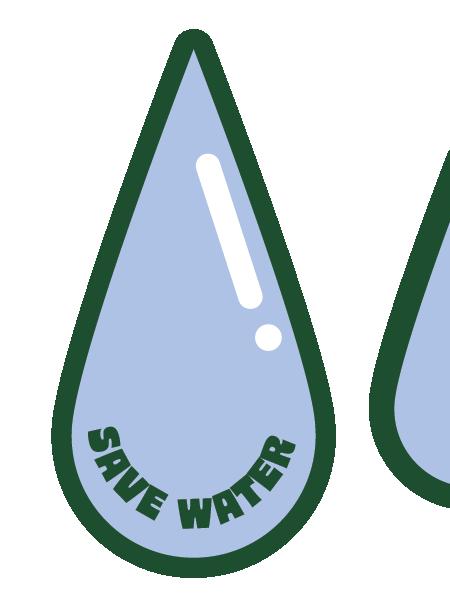

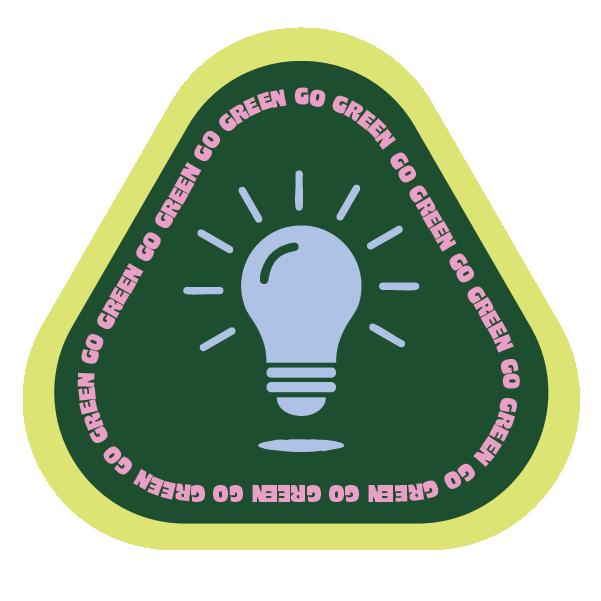






Christa Price | Opinion Writer
College, while an invigoratingly new experience, is a stressful time for most. There’s a lot of pressure placed on the shoulders of incoming students to have their life figured out — to have a major path already selected and to have their entire future laid out in front of them.
However, this mentality is a damaging one to hold. Most students don’t have an idea of what program of study they want to pursue, let alone what career they want to have for the rest of their lives.
Students holding even a minor note of uncertainty about their plans are better off remaining undecided rather than prematurely selecting a major and experiencing regret later, as they have to start all over again. Being undecided gives students the freedom to explore a variety of
subjects, free of the restrictions of a scripted pathway.
Yet, there is a stigma surrounding the notion of being undecided. According to UNC-Charlotte, the term is typically associated with a student who, for a multitude of reasons, is “unwilling, unable, or unready to make educational decisions.”
In reality, it is the complete opposite. Remaining undecided gives students complete control over discovering where their passion lies instead of feeling forced into making a premature decision.
There is also the option for students to be labeled as undeclared. Undecided students have not chosen an academic path for their major. Meanwhile, undeclared students have an interest in a specific subject, but haven’t declared a major.
Being undeclared is a good option for students who are unsure what major they want to select, uncertain about job opportunities post-grad for the major they are interested in, caught between multiple major options or have decided that the major they initially chose no longer fits them and are unsure of their next move. Undeclared students usually take courses related to their subject of interest.
At App State, the Academic Advising Center specializes in assisting first-year or undeclared students. Students can schedule an appointment with the earliest available adviser, select the reason for the appointment and choose what days and appointment style are best for their needs.
Being an undeclared student at App State provides a lot of opportunities for those experiencing uncertainty regarding their major choices — App State offers over 200
major choices across a variety of subjects, including all-online or the option for the Hickory Campus as opposed to Boone. Due to the large range of selections, App State opens its doors as a college fit for exploration and free-roaming of their extensive course catalogue while checking off general education credits. According to U.S. News & World Report’s 2025 Best Colleges, App State is the second top public university in the South.
Being undecided or undeclared should not be a source of shame for any student — it gives students the freedom to consider their interests, contemplate major and minor pathways and think about future careers before
making a concrete decision. The independence being undecided or undeclared garners within students allows them to be confident in their major selection later on.


Anna Kate Mock | Opinion Writer
There is a surplus of cliche material about the college experience readily available in countless movies and TV shows. A common theme within these stories is that they rarely show students actually going to class or doing school work, and instead choose to focus solely on the social aspects.
While this is important in its own right, it can also feed into party culture and normalize making poor, if not dangerous, decisions. My main piece of advice for any incoming freshman is to throw away any notions you have of college and discover it for yourself.
When entering college for the first time, it can feel like there is a tremendous amount of pressure to fit in with your peers. It’s crucial to understand you should never compromise your values to do so. The truth is, the kind of people you should let in are those who will unequivocally support you in becoming the best version of yourself.
As someone who went into university knowing I didn’t want to drink or party, I feared I would feel incredibly isolated, or as if I were some extreme outlier. Luckily for me, I was able to find like-minded individuals who shared my interests and values.
It might not always feel like it, but the right people are out there. Everyone around you is experiencing college for the first time, so find people you can lean on — whether that be from classes or clubs — and your time spent in school will be drastically better.
None of this is to put down those
who want to party, either. However, I feel compelled to argue that drinking in excess and partying most, if not every weekend, will eventually wreak havoc on your mind and body. Not to mention, it distracts you from what you are paying a great deal of money for — a degree.
The overconsumption of alcohol and its correlation to the freshman experience is an incredibly dangerous societal norm that never seems to be fought against. It seems like almost an expectation from others that going to college equates to underage drinking and attending fraternity parties.
But, there is a significant difference between embracing your independence and nearly giving yourself alcohol poisoning. It may not appear like it, but building a healthy network of friends, treating your body well and nourishing your mental health will make you so much happier in the long run than excessive partying ever will.
All in all, it’s healthy to want to
experiment a little when moving to a new place and entering an exciting phase of your life. To use words no one wants to hear, moderation is key. While college is a brief time in your life, it is also a way for you to test making a life for yourself on your terms. It’s a period when you can form different habits and try out new experiences with the comfort of an entire community surrounding you.
Lastly, go to class. I know academics may not be the center focus for everyone who enrolls in a university, but it still deserves your honest attention and devotion. You will not learn anything if you rely on shortcuts and derivative work to get you through school. As a student, it’s possible to have a fun time and get good grades simultaneously. Once you adjust to college, you learn that creating a balance and knowing how to weigh your priorities is an essential part of adulthood.
And remember, if you are ever struggling, there are people in your circle at App State who are ready and willing to help you. This time in your life is a massive transition so it’s perfectly healthy to rely on others, whether that be your family or mental health professionals.
Draw a silly little doodle!
Want to see your art featured? Submit your creations to @theappalachian on Instagram for a chance to be on our story!

Call for Artists! Graphics Designers, Illustrators, Comic Artists and Ad Designers - Bring your art to our pages! Apply to The Appalachian’s Graphics Desk now!